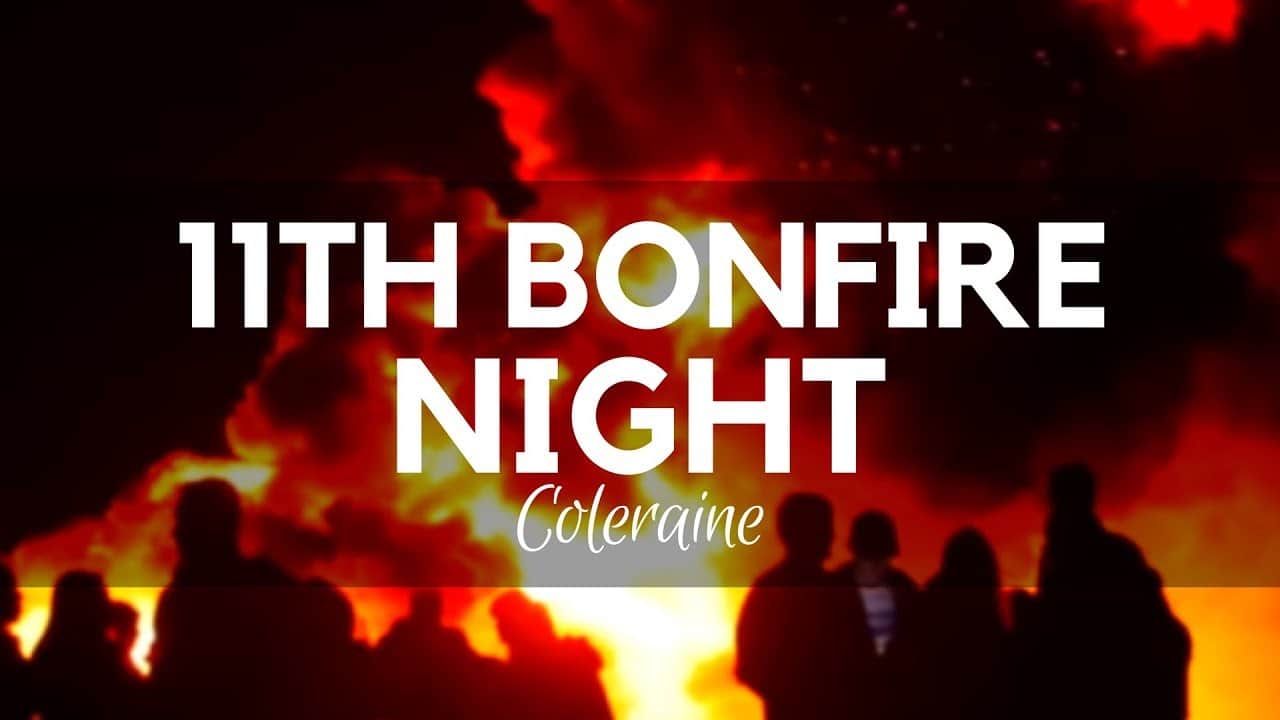The Eleventh Night Bonfire: The History of Bonfires in Northern Ireland

Updated On: April 21, 2024 by Ciaran Connolly
Every July in Northern Ireland, the night sky is illuminated by towering bonfires, marking the Eleventh Night Bonfire – a tradition steeped in history, culture, and controversy. These fires, visible across the country, are more than mere festive beacons; they symbolize a deep-rooted historical narrative and reflect the complex socio-political landscape of the region. This article delves into the origins, meanings, and modern-day implications of the Eleventh Night bonfires, a practice interwoven with Northern Ireland’s identity.
Eleventh Night Bonfire Historical Context: The Battle of the Boyne
The Prelude to the Battle
The Battle of the Boyne, fought on 1 July 1690 (according to the old Julian calendar, or 11 July in the modern Gregorian calendar), was more than just a battle; it was the culmination of a series of complex religious and political tensions that had been simmering in Britain and Ireland for decades. At the heart of this conflict was the struggle for the English and Irish thrones, a struggle deeply intertwined with the wider European wars of religion.
James II, a Catholic, ascended to the thrones of England, Scotland, and Ireland in 1685. His reign was marked by increasing tensions, as his open Catholicism was met with suspicion and hostility in predominantly Protestant England. The turning point came with the birth of his son in 1688, which threatened the establishment of a Catholic dynasty in Britain. This event triggered the Glorious Revolution, in which James II was deposed, and William of Orange, a Protestant and the husband of James’s daughter Mary, was invited to take the throne.
The Clash at the Boyne
The Battle of the Boyne was fought near the river Boyne, close to the town of Drogheda in Ireland. It was a confrontation between the deposed King James II and William III, who had ascended to the English and Irish thrones. James, supported by a Franco-Irish army, sought to reclaim his kingdoms, while William aimed to secure his rule and the Protestant succession.
Despite being outnumbered, William’s well-drilled army was better equipped and more experienced. The battle itself, while not the most bloody or lengthy of conflicts, was decisive. William’s victory was a significant blow to James’s cause. James fled to France after the defeat, effectively ending his attempt to regain the throne and ensuring William and Mary’s rule.
The Broader Implications
The Battle of the Boyne had far-reaching consequences. It secured Protestant ascendancy in Ireland for over a century and intensified the division between the Protestant and Catholic communities. The battle became a symbol of Protestant victory over Catholicism, not just in Ireland but across Europe.
Legacy and Commemoration
The legacy of the Battle of the Boyne remains deeply ingrained in the cultural and political landscape of Northern Ireland. The annual commemoration of the battle through the Eleventh Night bonfires is a reflection of its enduring significance. For the Protestant community, the battle symbolizes the defence of their religious and political freedoms, while for Catholics, it is often seen as a reminder of the beginning of a long period of subjugation and exclusion.
The Battle of the Boyne remains one of the most iconic and symbolic events in Irish history. Its commemoration through the Eleventh Night bonfires is more than just a celebration of a military victory; it is a complex tradition that encompasses centuries of history, religious and political identity, and the ongoing journey of reconciliation in Northern Ireland. Understanding the significance of the Battle of the Boyne is crucial to comprehending the intricate tapestry of Northern Ireland’s past and present.
The Significance of Bonfires: Celebrating the ‘Glorious Revolution’
The Eleventh Night bonfires are a celebration of this ‘Glorious Revolution’ and William’s victory. Historically, bonfires have been part of Irish culture, used to commemorate significant events and mark pagan holidays such as Midsummer, Bealtaine, and Samhain, celebrated by both Catholics and Protestants. However, their significance took on a distinctly political and religious dimension following the Battle of the Boyne.
The Tradition of Bonfires: A Symbolic Act
In 1690, bonfires were reportedly lit in Carrickfergus to guide King William’s warships into Belfast Lough, aiding his military campaign. This act has since been commemorated annually on the Eleventh Night, with bonfires lit to celebrate the Williamite victory. These bonfires, often constructed from wooden pallets and tyres, sometimes reach staggering heights, becoming monumental symbols of this historical event.
Modern Celebrations: Merriment and Marching Bands
Today, the Eleventh Night is characterized by merriment, with parties, parades, and marching bands playing tunes associated with loyalism. These celebrations are particularly prominent in loyalist communities, where the Eleventh Night is an integral part of cultural expression. The bonfires serve as communal gathering points, reinforcing a sense of identity and history among the Protestant population.
Controversies and Challenges
However, the Eleventh Night is not without its controversies. The scale and nature of the bonfires have raised environmental and safety concerns. In some instances, the fires have led to damage to nearby properties and posed risks to public safety. The political and sectarian undertones of the event have also exacerbated tensions between the Protestant and Catholic communities, highlighting the deep-seated divisions that still exist in Northern Irish society.
The Road to Modern Interpretations
In recent years, there has been growing dialogue about balancing the tradition with its modern-day implications. Efforts have been made to ensure the bonfires are safe and environmentally friendly, with community leaders advocating for responsible celebrations. Additionally, there is a growing recognition of the need for cultural sensitivity and respect for all communities, fostering a more inclusive approach to the tradition.
Conclusion
The Eleventh Night bonfires in Northern Ireland are a vivid reminder of the region’s tumultuous history and its ongoing journey towards peace and reconciliation. While they are a source of celebration for many, they also embody the complexities of Northern Irish identity and the challenges of a society still grappling with its past. Understanding the significance of the Eleventh Night is essential to comprehending the broader socio-political narrative of Northern Ireland – a narrative that continues to evolve in a landscape marked by history, tradition, and change.






